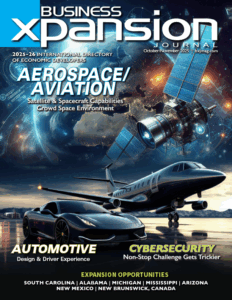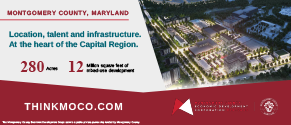Washington Facilitates Work and Life Balance
28 Nov, 2012
By Rachel Duran
Washington’s business climate offers industry sectors the opportunity to “cross-pollinate” with other industries. The state’s Pacific Northwest location supports an expanding export powerhouse. What’s more, growing businesses will find many of the greatest investment opportunities exist on the eastern side of the state.
The advanced manufacturing sector in the state underpins industry activities including renewable energy equipment manufacturing, medical technologies such as medical devices, and information communications technology (ICT), says James Palmer, economic development manager, Washington State Department of Commerce. “There are interesting synergies between advanced manufacturing and ICT or life sciences and ICT. For instance, Enprecis produces onboard technologies for automobiles. “The company is a great example of the cross-pollination that we feel is one of the greatest strengths of Washington; when people from one sector [IT], start talking and working with another [automotive or aerospace], you get some really innovative and high-value products.”
These products have increasingly been making their way to international destinations. Washington state is only state in country that runs a trade surplus with China, much of which is driven by The Boeing Co., software products and agriculture products. Palmer works closely with small and medium-sized enterprises in the state to explore opportunities to export.
Washington Gov. Chris Gregoire is also spreading the advantages of the state’s products throughout the globe. This year, trade missions have taken state officials to England, Ireland, South Korea and India. In India, which experienced energy blackouts earlier this year, Washington researchers were able to share their expertise in the crossroads of ICT, advanced manufacturing and smart-grid technologies. The Tri-Cities region of Washington is home to the nation’s largest smart grid demonstration project, where stakeholders are backed in their efforts by an $800 million federal grant. Leading the way in the demonstration project are Schweitzer Engineering Laboratories Inc. from Pullman, a leader in smart metering; and the Pacific Northwest National Laboratory, located in Richland, a leader in battery technologies and energy storage.
While in South Korea, Governor Gregoire promoted the state’s potato crop to officials in a country that has partially lifted a ban on accepting exported potatoes.
Palmer says eastern Washington’s vibrant agricultural and food processing sector offer some of the state’s greatest investment opportunities. The region supports Washington’s No. 2 ranking behind California for its wine growing production, with sales increasing around the world, particularly in Asia.
China is interested Washington’s agricultural products, particularly because of approvals by the FDA and other food safety groups. Palmer is working on a project with a Japanese company that will grow Adzuki beans in the state to make a red bean paste from a facility in eastern Washington. The product will be exported to China and Japan.
‚ÄúWhat you find on the eastern side of the state is inexpensive energy; inexpensive and available land,‚Äù and a straightforward regulatory environment, Palmer notes. He also notes the strength of the talent base, which has been a factor in attracting global firms such as REC Silicon and SGL Automotive Carbon Fibers.¬Ý REC Silicon is a large manufacturer of solar grade polysilicon and technical gasses. SGL is a joint venture of SGL Group and BMW Group, and produces carbonized threads for use in the new BMW electric vehicle.
Industries and Innovations
Washington is home to quite a few global companies, including Microsoft Corp., The Boeing Co., Amazon.com, HTC America, Starbucks Coffee Co., and Costco Wholesale, among others.
Boeing’s broad supply chain includes composite manufacturers, a sector that has diversified into a variety of products and processes, Palmer notes. “We are developing programs and looking at opportunities to create new and additional incentives around the advanced composites materials industry: not just carbon fiber, but wood products as well,” he says.
In northwest Washington, the Port of Port Angeles, working with the city, has installed infrastructure and buildings to create a composites campus at the port. An aerospace company has located to the campus, and development officials aim to attract value-added partners to support aerospace and composite activities, says Linda Rotmark, executive director, Clallam County Economic Development Council.
Suppliers to the aerospace sector have also realigned their excess capacity to manufacture parts, as well as perform MRO services to support the renewable energy industry.
In Clallam County, officials are exploring opportunities in ocean-related renewable energy activities, supported by logistics capabilities at the Port of Port Angeles. The Clallam County Innovation Partnership Organization aims to build a cluster of businesses involved in ocean energy research, technology engineering and development, and maritime deployment, operations and maintenance. Regional partners, including Clallam, Kitsap, Jefferson, Pacific and Grays Harbor counties, will focus on offshore wind, wave, tidal, and marine biomass energy efforts.
Renewable energy-related activities in Washington also focus on battery storage research, which will assist the state as it balances its wind energy load — the state is ranked No. 6 for installed wind energy capacity.
In regard to overall industry clusters, Washington’s business environment is well suited to support developments in ICT; life sciences/global health; clean tech; advanced materials; value-added agriculture; and marine-related activities.
Marine-related industries do well in the city of SeaTac, which is located between Seattle and Tacoma, and 30 minutes away from both of these cities’ seaports. SeaTac is home to a cluster of trucking companies, 3PLs and warehouses. The city also features an international airport, and is the world headquarters of Alaska Airlines. In the last year, three international logistics companies have located to SeaTac: Leader Mutual, SDV and Kintetsu World Express.
SeaTac officials are partnering with area stakeholders on an air cargo logistics strategy that involves 200 undeveloped acres around and adjacent to the Port of Seattle. “This would be a good location for companies that need proximity to or direct access to an international airport,” says Jeff Robinson economic development manager, city of SeaTac.
In Whatcom County, airline carriers are adding routes to service the Bellingham International Airport. These companies include Allegiant Air, Alaska Airlines and most recently, Frontier Airlines. The county’s location near the Canadian border puts it within 30 miles of the Vancouver region, which brings an influx of Canadians to the airport, which is good for businesses, says Lydia Bennett, director of business development, Port of Bellingham, which also manages the sea port.
Whatcom County is also located one-and-a-half hours from Seattle. Its location also provides excellent water bound transportation access to Alaska, says John Michener, economic development specialist, Port of Bellingham. Bellingham is more than 75 miles closer to Alaska and the Bering Sea than the southern Puget Sound region ports.
The port system features 1,600 acres, and two boat recreation areas. There are two marine terminals, one for cruises and one for shipping. At this time, officials are in the final stages of planning the redevelopment of a 137-acre site on the waterfront, formerly owned by Georgia Pacific. The RFP for the first 10 acres was to be issued in November.
Talent and Education
“It is in the state’s prevue to keep workforce programs funded to keep producing the talent base,” Palmer says. He says talent wants to live and work in the state, drawn to the Puget Sound region, for example. What’s more, Palmer notes that Seattle offers the type of work talent is looking for, home to companies such as PopCap, Big Fish Games, Nintendo USA and Amazon. “Amazon has hired 9,000 people in Seattle in the past two-and-a-half years,” Palmer says.
Companies based in the Silicon Valley are also attracted to Washington’s work and life advantages. Facebook, originally planned to hire a 20-person application development team in the state is up to 200 employees. Mobile application development and mobile technology are strong components in Washington’s ICT sector.
In order to keep the talent base well prepared, officials are also working to increase the number of STEM workers in the state. There are three grant programs to support science, technology, engineering and math initiatives. In one program, high schools prepare students for employment as entry-level aerospace assemblers; in a second program, skill centers implement enhanced manufacturing skills programs; and finally, a third program supports the implementation of specialized STEM courses in high schools.
Assets
Palmer says businesses tell economic development officials the state offers several pro-business assets. The top advantages cited:
*quality of life
*low cost energy
*centralized export hub
*culture of innovation
*pro-business environment
*end-to-end supply chain capabilities
*highly skilled workforce
At the local level, the pro-business environment in SeaTac has resulted in the consolidation of business services to one department, the Department of Community and Economic Development. The department is the one stop businesses make to take care of building and other permits, planning, code enforcement and economic development concerns.
The city is also part of the South King County Economic Development Initiative, which brings together the strengths of five cities, Highline Community College and the Port of Seattle to promote the region’s business advantages.
Lifestyle
Clallam County is a fantastic spot for tourists and outdoors enthusiasts, Rotmark says. The county is home to Olympic National Park, which offers opportunities for skiing, hiking, camping, etc. “We are also bordered by the Pacific Ocean and the Strait of Juan de Fuca,” Rotmark says. “On the ocean side and the strait you can do salt water fishing; and there is surfing up toward Neah Bay and down along the coast line.”
Robinson says SeaTac is a brief light rail train ride into downtown Seattle and its professional sports venues and cultural activities. What’s more, “we are pretty much right on Puget Sound, with beautiful views of mountains and water from several of the communities. SeaTac is also home to the most park acreage per capita in all of King County.”
Illustration by arztsamui at Free Digital Photos.net











